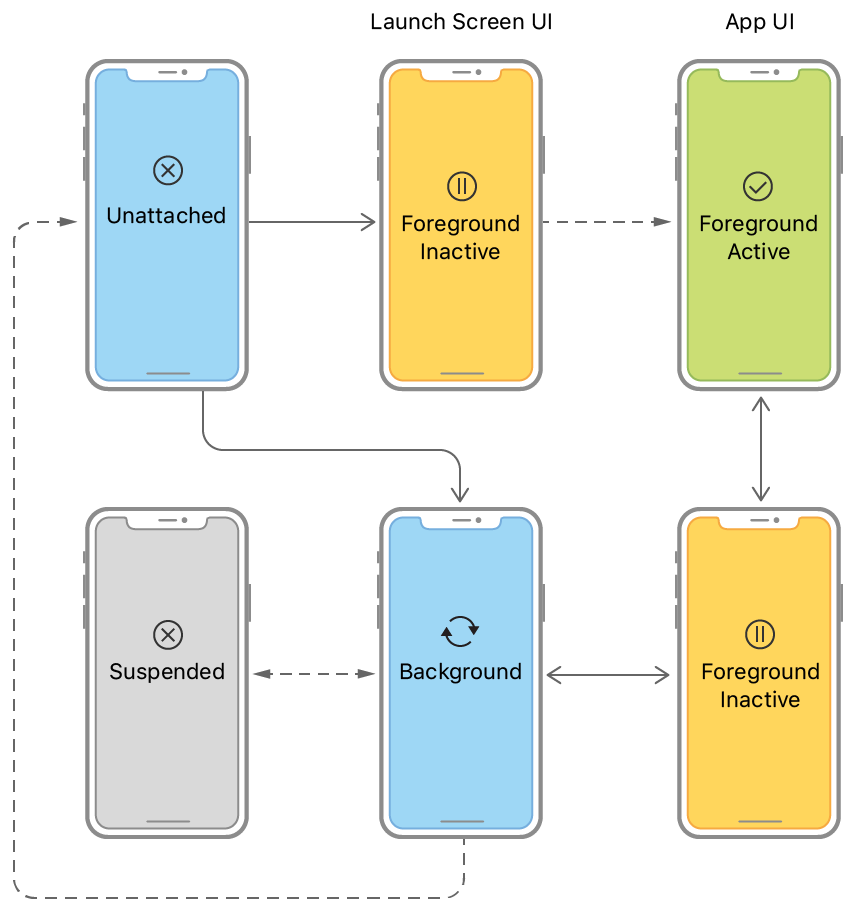oh-my-docs
Summary for developers
Project maintained by italkso Hosted on GitHub Pages — Theme by mattgraham
应用生命周期
The current state of your app determines what it can and cannot do at any time. For example, a foreground app has the user’s attention, so it has priority over system resources, including the CPU. By contrast, a background app must do as little work as possible, and preferably nothing, because it is offscreen. As your app changes from state to state, you must adjust its behavior accordingly.
Managing Your App’s Life Cycle - Apple Developer

五种状态
应用的生命周期 (App Life Cycle)是指应用程序在设备上运行时的不同状态。当用户对应用进行不同的操作时,应用会在用户进行不同操作时在这些状态中进行切换。
-
Unattached
应用完全没有被运行,也不在内存中。所以此时应用不会消耗内存,也不会运行代码。比如,关机重启后、上划并彻底退出应用后、新安装应用未打开等都属于未读取 (Unattached)状态。
-
Foreground Inactive
前台不活跃( Foreground Inactive)是短暂的过渡状态,启动应用以及前后台之间的切换都要经历。当应用界面已经显示在屏幕上,但还不会对用户操作作出反馈时就处于这种状态。进入前台活跃状态时,要读取数据,准备 UI。而退出前台活跃状态时,应该存储数据,暂停当前正在运行的内容,减少资源消耗。
-
Foreground active
前台活跃(Foreground active)是应用最常见的状态,当应用界面展示在手机屏幕上运行,用户可以对其执行任何操作。
-
Background
后台 (Background )状态表示应用仍在内存中,可以继续运行代码,并随时准备被再次使用。
-
Suspended
挂起 (Suspended) 状态表示,虽然应用仍然在内存中,但是应用不能再运行任何代码。当应用在后台长时间没有被使用,就会进入挂起状态。如果其它应用需要使用更多的内存,处于挂起状态的应用随时会被系统从内存中移除。
项目实践
import SiwftUI
@main
struct ForCreatorLifeCycleApp: App {
@environment(\.scenePhase) private var scenePhase
var body: some Scene {
WindowGroup {
ContentView()
}
.onChange(of: scenePhase) { newPhase in
switch newPhase {
case .active:
print("Foreground Active")
case .inactive:
print("Foreground Inactive")
case .background:
print("Background")
@unknown default:
print("Error")
}
}
}
}